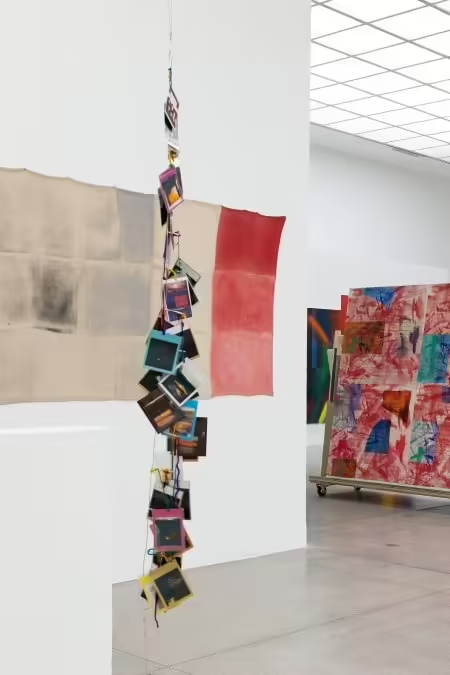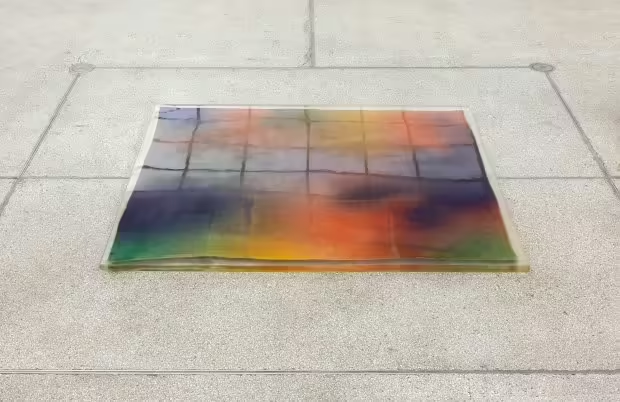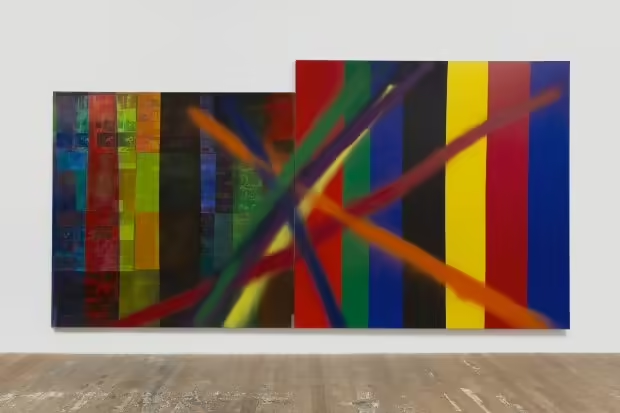HIGH RECOMMENDATION: ROCHELLE FEINSTEIN

With sovereign lightness and apparent casualness, Rochelle Feinstein is able to set the main hall of the Secession in vibration with her abstract painting.
If you come closer to the works, you become aware that it is by no means pure painting or pure abstraction. The New York artist, born in 1947, has developed an artistic practice over the past 40 years that uses various artistic techniques and media.
Rochelle Feinstein’s work goes through a process that can include painting, photography, scanning, digital scaling, screen printing, UV printing, artificial intelligence transformation and repainting with brush or spray. It produces large-format collages and creates an appearance that can be described as picturesque.
Rochelle Feinstein uses a peculiar appropriation strategy of various motifs or gestures of great artists of the 20th century. century, she hints at their art in the background of her own work, without a specific work being able to be described and creates something specific characteristic new.
In the Secession Rochelle Feinstein shows very current works under the ambliguous exhibition title “Zeit im Bild”, almost all exhibits were created in 2024. Color, rhythm and movement determine the works as well as the disposition of the same.
The floor work “embedded” is placed centrally in the room: a cheap square cloth is sprayed in rainbow colors and poured in synthetic resin. The inferior material has become precious and difficult to handle due to the expensive cast. It is an ironic allusion to the abstract art in the USA as well as to the sleeve of the rainbow colors, which has now been emptied by commercialization.
Around this centrally dormant work, which functions as an anchor for the remaining exhibits, there is a moment of movement and fleetingness. Some work is presented on wheelchairs, which appear to be temporarily parked. Other works are pinned to the wall with needles and framed in groups by a painter’s tape that has taken on a framing function or is perceived as a compositional element.
According to the press release, the works are infiltrated by current debates about politics and society, art, commerce, sex, stupidity and election campaign. These references are often difficult to grasp and difficult to decipher. But methodology and means of expression clearly situate Rochelle Feinstein’s paintings in the current art scene. Their examination of the various techniques and means of expression of the time is thought out with care and played out with a self-evidentness and freedom, one might think with arbitrariness.
In her large pictorial collages, she puts the different artistic techniques side by side and on top of each other. Painting, transformed painting, transformed screen printing or transformed photography overlap in fragments, one technique undermits the other and contradictions appear.
In “Trauma Buddies, Orange”, a wipe paper, on which a brush has been wiped, becomes a pictable motif of a large-format composition: The brush stroke is photographed, scanned, scaled, screen printed and put side-by-by-side in reproductions, potentiated, in repetitions, which are then not repetitions. The spontaneity of the great gesture of the brushstroke is invalidated by the translation into screen printing, its celebrated singularity decomposes in the return as well as in the grids of the printing process. The intuitive subjectivism of the great gesture is excavated, in its place the gesture of fragmenting and collaging is set.
Rochelle Feinstein evokes heroes and paradigms of art history, the ingenious gesture of the brushstroke, the color field painting, the abstract expressionism. She unpretentiously parodies the pathos and the weighty seriousness of these mostly male greats and their art, stages them and humorously and subtly thwarts their strategy.


